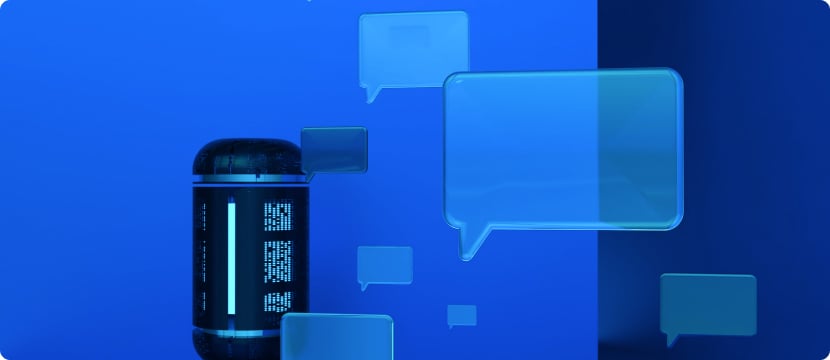

Have you heard about OpenAI’s ChatGPT technology and how it could revolutionize the insurance industry? A McKinsey report suggests that between 10% to 55% of insurance functions could be automated by 2030 by integrating ChatGPT and robotic process automation. This could lead to streamlined insurance claims processing, faster risk assessment, and reduced insurer costs. Intelligent chatbots could also enhance customer service and reduce the workload of customer service representatives. However, implementing these technologies at scale could pose challenges such as data privacy, security, and change management. Read on to learn more about the potential of AI in the insurance industry.
With its current capabilities, McKinsey reports, OpenAI’s ChatGPT can automate 10% to 55% of major insurance functions by 2030. (Please note that when we mention ChatGPT in the article, we are referring to the latest version, i.e. ChatGPT4)
Does this sound like great news for business? Certainly. But does it sound like good news for business leaders? Likely not.
To begin with, let’s consider some real-world examples and the current usage of A.I. in the insurance industry. A.I. has already automated functions such as claim processing, accelerated claims adjudication, and rapid documentation digitalization, among other industry functionalities.
However, that’s not the end of it. Reports suggest numerous other functions can be automated. This includes customer services and underwriting as well. Let’s look at how this tech is redefining the insurance industry.

Going by industry standards, claim processing can be time-consuming and complicated, at the very least. The process is infamously known to eat away 50% to 80% of insurance premium revenue, making it one of the most in-demand tasks that need to be automated from a business perspective.
Underwriting
Underwriting, the process of evaluating and assessing risk, can overwhelmingly take a few days to weeks to say the final ‘yes’ or ‘no’. This generally depends upon the applicant’s quality and may get delayed further due to missing information. And this is where RPA and ChatGPT come into play. Using RPA, insurers can identify missing information and extract relevant information from the submission, reducing the time and effort required by underwriters.
According to a McKinsey report, using RPA in underwriting can save as much as 60% of previously observed turnaround time, leading to a significant reduction in costs for insurers and the mutual interests of both parties.

Undoubtedly, customer service is one of the critical functions of every industry, whether insurance or not. However, a large part of it is repetitive and needs lesser manual intervention, making room for automation.
RPA can then automate tasks such as data entry or routing customer inquiries to the appropriate department, allowing customer service representatives to focus on more complex tasks and improving overall efficiency. A report by Gartner found that using chatbots in customer service can reduce customer service costs by up to 30% and improve customer satisfaction by up to 25%.
For insurers, storage, security, and adherence to data compliance can be challenging, at the very least. In such times, a threat to millions of records can bring the company’s reputation at stake and hence cannot be ignored at all costs.
In addition, insurers need to consider using secure cloud-based systems to safely store and process customer data. As insurance companies strive to become more efficient and customer-centric, ChatGPT and RPA evolve as powerful tools for automation and digital transformation. By leveraging these technologies’ strengths, insurers can significantly improve their operations, including faster turnaround times, lower costs, and better customer experiences.

Despite knowing the benefits, companies haven’t utilized these technologies at scale for numerous reasons. Most insurers claim to be aware of the challenges and considerations associated with A.I. Here are some critical challenges.
Insurance companies collect customer data massively. These records include access to personal, medical, and even financial information. Protecting these data from unauthorized access and breaches or being used for unauthorized activities is essential. ChatGPT and RPA put an end to this risk by automating processing tasks but haven’t been successful in making any significant disruption yet.
Change Management
Implementing ChatGPT and RPA can require significant changes to an insurer’s processes, systems, and culture. Insurers enable this by having a well-defined change management plan. The action plan includes training employees, clearly defined communication protocols, and retaining the concepts of stakeholder buy-in. This proactive approach allows insurers to ensure that their implementation of ChatGPT and RPA is successful and sustainable.
Integrating with Legacy Systems
No matter how far we may have come, most systems used in the industry run on legacy software and hardware. These systems fail to leverage the legacy system’s computational aspects that are mostly incompatible with ChatGPT and RPA. To address this challenge, insurers can use middleware platforms to integrate ChatGPT and RPA with their existing systems. Middleware platforms act as a bridge between different software applications, allowing them to communicate with each other and share data.
Ethical Considerations
Let’s face it. We are still afraid of the ways it could turn into a fiasco for the entire humanity. Even ChatGPT3 accepts it. Ask the bot, “What are the possible threats to humanity?” The machine gets that A.I. could turn devil. Likewise, ChatGPT can generate biased or discriminatory responses if it is not trained on diverse data sets. It, thus, is essential to ensure that ChatGPT and RPA are designed and used ethically and responsibly.
Regulatory Compliance
The insurance industry is subject to numerous regulatory requirements, including GDPR and CCPA. Insurers must ensure that their use of ChatGPT and RPA complies with these regulations. For example, insurers must obtain consent from customers before collecting and processing their data. A simple yet effective way to achieve this is by being transparent about how ChatGPT and RPA are used.
Loved what you read?
Get practical thought leadership articles on AI and Automation delivered to your inbox


Loved what you read?
Get practical thought leadership articles on AI and Automation delivered to your inbox
ChatGPT and RPA are emerging as powerful tools for automation and digital transformation in the insurance industry. By leveraging these technologies’ strengths, insurers can significantly improve their operations, including faster turnaround times, lower costs, and better customer experiences. However, insurers must be aware of the challenges and considerations associated with their use and take a proactive approach to implementation and change management.
Disclaimer Any opinions, findings, and conclusions or recommendations expressed in this material are those of the author(s) and do not necessarily reflect the views of the respective institutions or funding agencies





